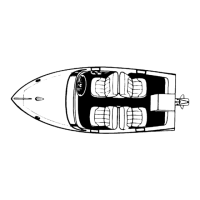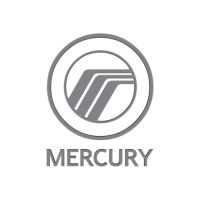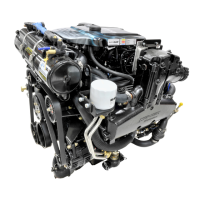3A-28 - ENGINES 90-823225--1 1096
2. With engine in No. 1 firing position as determined
above, the following valves may be adjusted.
72328
3. MCM and MIE Left-Hand (Standard) Rotation
Engines:
Exhaust - 1-3-4-8 Intake - 1-2-5-7
MIE Right-Hand (Opposite) Rotation En-
gines:
Exhaust - 1-2-5-7 Intake - 1-3-4-8
4. Back out adjusting nut until lash is felt at push rod,
then turn in adjusting nut until all lash is removed.
This can be determined by moving push rod up
and down while turning adjusting nut until all play
is removed.
72300
5. Hydraulic lifters now can be adjusted by tighten-
ing adjustment nut an additional one turn. No oth-
er adjustment is required.
6. Crank engine one revolution until pointer “0”
mark and torsional damper mark are again in
alignment. This is No.6 firing position. With en-
gine in this position, the following valves may be
adjusted as previously outlined.
7. MCM and MIE Left-hand (Standard Rotation
Engines:
Exhaust - 2-5-6-7 Intake - 3-4-6-8
MIE Right-Hand (Opposite) Rotation En-
gines:
Exhaust - 3-4-6-8 Intake - 2-5-6-7
Engine Running
Following procedure is performed with engine run-
ning:
1. After engine has been rechecked for normal op-
erating temperature, remove rocker arm covers
and install rocker stoppers as shown.
72301
a - Rocker Stoppers (91-66273)
a
2. With engine running at idle, loosen rocker arm
nuts (one at a time) until rocker arm starts to clat-
ter.
3. Turn rocker arm nut down until clatter just stops.
This is zero lash position.
4. Turn nut down 1/4 additional turn and pause 10
seconds until engine runs smoothly. Repeat until
nut has been turned down one turn from the zero
lash position.
IMPORTANT: This one-turn preload adjustment
must be done slowly to allow the lifter to adjust
itself and prevent the valves from hitting the pis-
tons, causing internal damage and/or bent push
rods.

